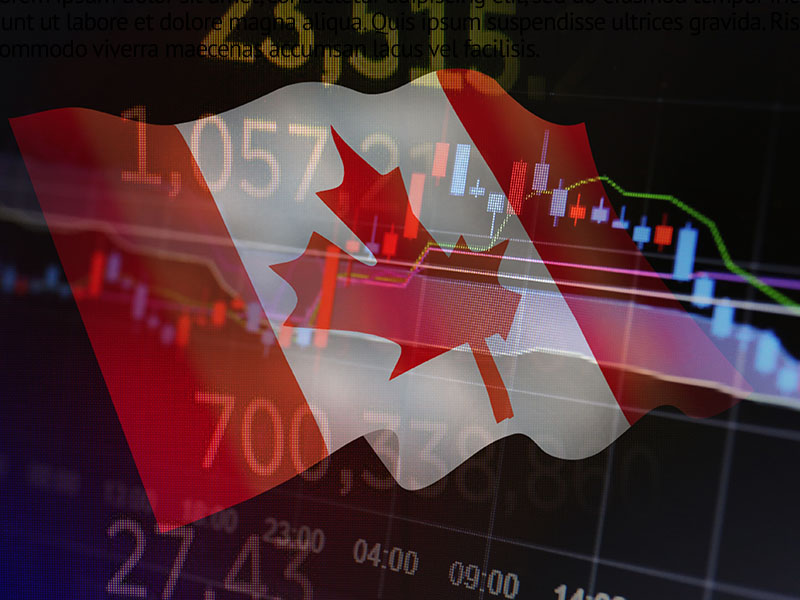

Economic gains in U.S. and Canada bode well for fixed income
Response to Covid and strong economic growth has put Canadian bonds in a good position, says Mackenzie VP
- Featuring: Dustin Reid
- May 11, 2021 May 10, 2021
- 13:01
- From: Mackenzie Investments

(Runtime: 4:58. Read the audio transcript.)
**
Government spending will likely be less of a factor in sovereign bond prices moving forward.
Dustin Reid, vice-president of investment management with Mackenzie Investments, said that investors have become acclimatized to stimulus spending, and are prioritizing other metrics as they consider where to put their money.
“A lot of what people expected to happen, in terms of fiscal [stimulus], has been priced into the market,” Reid said. While the magnitude of stimulus is still an “important theme,” he said, fiscal policy as a primary driver of bond prices “is coming to an end.”
He expects the impact of aggressive government spending to vary in each country, depending on the level of borrowing relative to GDP.
In the case of the U.S., the Biden administration’s infrastructure plan — expected to cost in excess of $3 trillion — will be enacted over the next 10 years. “On a $20-trillion economy, it doesn’t have the same immediate impact,” Reid said.
And in Canada, the recent federal budget contained less borrowing than some economy watchers had expected. As a result, Reid said Canadian sovereigns are in a good place.
“Canadian yields will continue to be healthy, and they’ll continue to move higher, not only based on the strength of the Canadian economy, but also because I think the U.S. economy is doing quite well,” he said. “The export story from Canada to the U.S. should continue to be quite strong. And U.S. growth is going to clearly power a lot of that growth in the coming quarters.”
Reid, who is chief fixed income strategist with Mackenzie’s fixed income team, said Canadian government bond rates will also benefit as the Bank of Canada scales back its bond purchases.
The more hawkish position taken by the Bank of Canada in April really got the market’s attention globally, he said, for being “one of the few central banks that is looking to remove accommodation relatively quickly.”
The BoC began tapering its weekly bond buying in October 2020 when it dropped from $5 billion a week to $4 billion. In April 2021, the purchase target fell to $3 billion a week.
Reid said those decisions may have started as an accounting move, but also proved useful as the economy began to heat up.
“The Bank doesn’t really want to hold more than 50% of the total outstanding amounts of government bonds in the market,” Reid said. “But when the Bank had the meeting in April, it was clear that things looked a lot better in April than it did in January.”
The BoC moved its projection for first-quarter GDP up by 9.5 percentage points (from -2.5% to about 7%) and raised its projection for 2021 annual growth by 2.5 percentage points to 6.5%.
“It was a massive swing,” Reid said. “I think it was not only an accounting reason to taper, but it was also fundamental because things looked a lot better.”
Canadian government bonds look attractive compared with offerings from other countries.
“Particularly during the back half of 2020 and into earlier this year, the demand for Canadian sovereign fixed income, at the federal level, has been very strong,” he said. “And part of that is because a lot of the other major markets in the world are generally yielding negative returns at least on a domestic basis.”
For example, German 10-year Bund yields are negative, and Japan’s 10-year yields have been barely positive for years, even before the crisis. Canadian 10-year yields are now around 1.5%, having begun the year at 0.68%.
Canada also looks good when viewed through the lens of the global crisis.
“Canada has in many ways led the world in terms of the size of the response to the pandemic from a financial perspective,” Reid said, pointing to the country’s Covid-19 benefits.
The question of how government borrowing will impact future generations remains open, he admitted, but there is some solace knowing that Canada is not acting alone.
“Everyone is taking on a massive amount of debt; this isn’t one country going off on its own and printing a ton of money,” Reid said.
“Everyone is doing it. It’s just slightly different degrees.”
**
This article is part of the Soundbites program, sponsored by Canada Life. The article was written without sponsor input.
